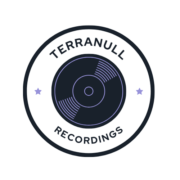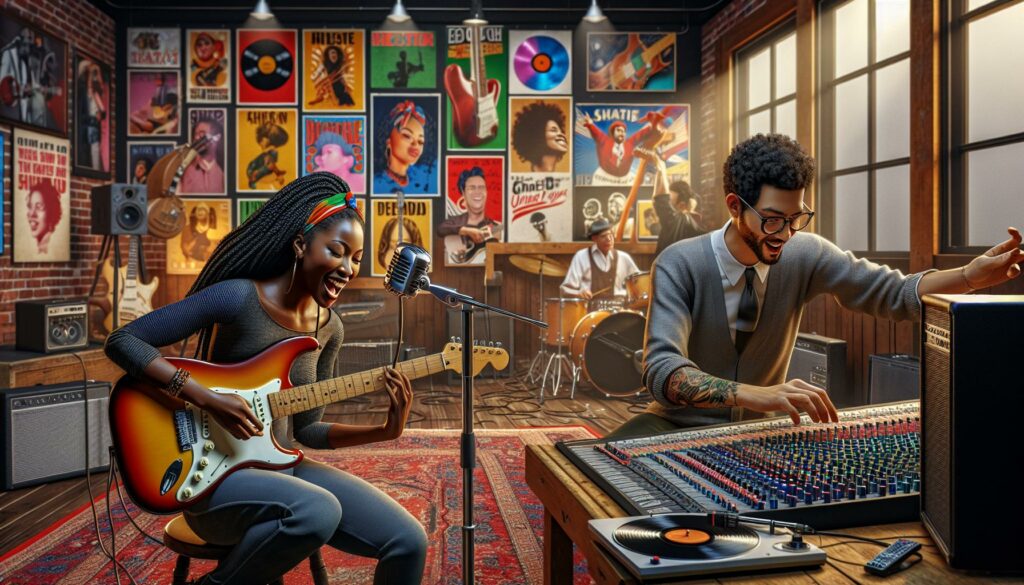I’ll tell you that defining music genres isn’t as straightforward as it might seem. These categories go beyond just how music sounds – they encompass cultural influences historical context and even social movements. From classical to hip-hop and everything in between each genre tells its own unique story while constantly evolving and spawning new subgenres. In my experience understanding genre definitions doesn’t just enhance our appreciation of music – it connects us to the rich tapestry of human creativity and expression.
Key Takeaways
- A music genre is defined by both musical characteristics (rhythm, tempo, instruments) and cultural elements (time period, geography, social movements)
- Traditional genre classifications have evolved from basic categories in the 1950s to complex hybrid genres in the digital streaming era
- Technical elements like beat patterns (BPM), instruments, and production techniques serve as key identifiers for categorizing music
- The music industry actively shapes genre labels through marketing strategies, influencing everything from radio formats to streaming algorithms
- Modern music increasingly blends multiple genres, creating fusion styles that challenge traditional classification boundaries
- Digital platforms use sophisticated algorithms to analyze audio features, metadata, and user behavior for more precise genre categorization
Music Genre Definition
A music genre combines distinct musical characteristics with specific cultural elements that create recognizable patterns. I examine these fundamental components that distinguish one genre from another through standardized classifications.
Key Musical Elements
Musical genres emerge from specific combinations of rhythm, melody, harmony, tempo, instrumentation, and vocal style. Here are the essential elements that shape genre identity:
- Rhythm Patterns: Rock uses strong backbeats while jazz emphasizes syncopation
- Tempo Range: Death metal operates at 160-240 BPM while ambient music typically stays below 60 BPM
- Instrumentation: Classical music features orchestral instruments while electronic dance music uses synthesizers
- Sound Production: Hip-hop incorporates sampling while bluegrass focuses on acoustic recordings
- Vocal Techniques: Opera demands trained vibrato while punk rock embraces raw vocals
| Musical Element | Example in Rock | Example in Jazz |
|---|---|---|
| Typical BPM | 100-140 | 120-180 |
| Key Instruments | Electric guitar, drums | Saxophone, trumpet |
| Rhythm Focus | Backbeat (2,4) | Swing pattern |
| Production Style | Amplified, distorted | Clean, acoustic |
- Time Period: Disco emerged in the 1970s nightclub scene
- Geographic Origins: Blues developed in the Mississippi Delta region
- Social Movements: Punk rock aligned with 1970s anti-establishment ideology
- Fashion Styles: Heavy metal features black clothing dark imagery
- Performance Spaces: Classical music thrives in concert halls while house music dominates clubs
| Genre | Era of Origin | Cultural Movement |
|---|---|---|
| Hip-hop | 1970s Bronx | Urban youth expression |
| Grunge | Early 1990s Seattle | Gen X counterculture |
| EDM | Late 1980s Europe | Rave culture |
| Folk | 1960s America | Social protest |
Evolution of Music Genre Classification
The classification of music genres has transformed significantly since the early 20th century, reflecting technological advances cultural shifts. These changes have redefined how we categorize organize music across different platforms mediums.
Traditional Genre Categories
Early music classification systems emerged in record stores during the 1950s with distinct categories: Classical Jazz Blues Country Western. Record labels used these basic divisions for marketing distribution organizing their catalogs. Here’s how traditional genres were typically categorized:
| Time Period | Primary Genres | Key Characteristics |
|---|---|---|
| 1950s | Classical Jazz Blues | Formal structure academic training |
| 1960s | Rock Folk Pop | Youth culture radio formats |
| 1970s | Disco R&B Soul | Dance-oriented urban sounds |
| 1980s | Metal New Wave Hip-Hop | Subculture-driven specialized equipment |
Modern Genre Blending
Digital streaming platforms have revolutionized genre classification by introducing hybrid categories cross-genre recommendations. Artists now combine multiple musical elements to create unique sonic signatures such as:
- Cross-cultural fusion (Afrobeats-Pop Latin-Trap Indo-Jazz)
- Electronic hybridization (Folk-tronica Tech-House Future-Bass)
- Genre-fluid production (Alternative R&B Post-Rock Nu-Metal)
- Micro-genre emergence (Witch House Vaporwave Hyperpop)
| Classification Method | Examples | Purpose |
|---|---|---|
| Sonic Analysis | BPM key signature | Technical categorization |
| Mood Mapping | Energy level emotional tone | Playlist curation |
| Listener Behavior | Skip rates saves | Recommendation engines |
Technical Characteristics of Music Genres
Music genres exhibit distinct technical elements that create their unique sonic signatures. These characteristics serve as identifiers for categorizing musical compositions across different styles.
Rhythm and Tempo
Rhythm patterns form the foundational structure of music genres. Rock music features a strong 4/4 time signature with emphasized backbeats, while jazz incorporates complex syncopated patterns. Here are key rhythm and tempo characteristics:
- Beat patterns range from simple (pop: 4/4) to complex (prog rock: 7/8 or 5/4)
- Tempo variations define genres (EDM: 120-130 BPM, death metal: 180+ BPM)
- Groove elements distinguish styles (funk: syncopated sixteenth notes, reggae: offbeat accents)
- Rhythmic subdivisions create genre identity (trap: triple-time hi-hats, waltz: 3/4 pulse)
- Electric instruments define modern genres (rock: distorted guitars, synthpop: synthesizers)
- Acoustic elements characterize traditional styles (folk: acoustic guitar, classical: orchestral instruments)
- Digital production tools shape contemporary genres (hip-hop: samplers, EDM: virtual instruments)
- Sound processing techniques vary by genre:
- Metal: high-gain distortion
- Dub: heavy reverb effects
- Lo-fi: vinyl crackle simulation
- Pop: pitch correction
- Frequency ranges differ across genres (bass-heavy hip-hop vs. treble-focused bluegrass)
The Role of Music Industry in Genre Labels
Record labels shape genre classifications through marketing strategies that maximize audience reach and sales potential. The industry’s influence extends beyond simple categorization to actively creating and promoting genre distinctions.
Marketing and Commercial Impact
Record labels leverage genre labels to target specific demographics with tailored marketing campaigns:
- Develop promotional strategies based on genre-specific consumer behaviors
- Create genre-focused playlists that amplify artist visibility
- Position artists within profitable market segments
- Design album artwork that aligns with genre expectations
- Schedule releases during peak periods for specific genres
Here’s how genre classification impacts commercial performance:
| Genre Category | Average Revenue per Album (USD) | Primary Revenue Stream |
|---|---|---|
| Pop | 12.5M | Streaming |
| Hip-Hop | 8.7M | Digital Downloads |
| Rock | 7.2M | Physical Sales |
| Country | 6.4M | Radio Airplay |
| EDM | 4.2M | Live Events |
The industry’s categorization system influences:
- Radio station formats
- Retail store layouts
- Streaming platform algorithms
- Music chart categories
- Festival lineups
- Award show categories
This structured approach enables:
- Efficient music distribution
- Targeted advertising campaigns
- Clear market positioning
- Measurable performance metrics
- Strategic artist development
Through these classifications, record labels create distinct market segments that drive revenue streams across multiple platforms.
Debating Genre Boundaries in Modern Music
The traditional boundaries between music genres continue to blur as artists experiment with diverse influences and unconventional combinations. These shifting boundaries create both opportunities and challenges in categorizing modern musical expressions.
Crossover and Fusion Genres
Modern artists frequently blend multiple genres to create hybrid musical forms that transcend traditional classifications. Here’s how fusion genres reshape musical boundaries:
- Pop-Rap Fusion: Artists like Drake combine melodic pop vocals with rap verses, creating chart-topping hits that appeal to multiple audience segments
- Electronic-Classical: Musicians like Lindsey Stirling merge classical violin with electronic dance beats to forge unique sonic landscapes
- Country-Pop Crossover: Taylor Swift’s early works demonstrated how country music elements integrate with mainstream pop production
- Jazz-Hip Hop: Groups like A Tribe Called Quest pioneered the integration of jazz samples with hip-hop beats
Notable Genre Fusion Statistics:
| Genre Combination | Notable Examples | Peak Chart Position |
|---|---|---|
| Pop-Rap | “”Hotline Bling”” – Drake | #2 Billboard Hot 100 |
| Country-Pop | “”Love Story”” – Taylor Swift | #4 Billboard Hot 100 |
| Electronic-Classical | “”Crystallize”” – Lindsey Stirling | #1 Classical Digital Songs |
| Jazz-Hip Hop | “”Electric Relaxation”” – ATCQ | #13 Hot Rap Singles |
These fusion genres create innovative sound combinations while challenging traditional genre classification systems. Digital streaming platforms now include specialized playlists dedicated to crossover genres, reflecting their growing popularity and market impact. Record labels increasingly promote artists who successfully blend multiple genres, recognizing the broader audience appeal of hybrid musical styles.
Genre Classification in the Digital Age
Digital technology transforms how we categorize music genres through advanced algorithms data analysis techniques. This evolution creates more precise yet flexible classification systems that adapt to changing musical landscapes.
Streaming Platforms and Algorithms
Streaming platforms use sophisticated algorithms to analyze musical elements including tempo beat patterns instrumentation. These systems process millions of data points to categorize songs based on:
- Audio Features: Analyzing wavelengths frequencies rhythmic patterns vocal characteristics
- Metadata Tags: Processing artist-provided information genre labels release dates
- User Behavior: Tracking listening patterns playlist additions skip rates
- Cross-referencing: Comparing similarities between tracks artists musical styles
Here’s how major streaming platforms classify music:
| Platform | Classification Method | Number of Primary Genres | Sub-genres |
|---|---|---|---|
| Spotify | Echo Nest Algorithm | 15 | 1,300+ |
| Apple Music | Human + AI Hybrid | 26 | 800+ |
| Amazon Music | Deep Learning | 20 | 950+ |
The platforms’ recommendation engines create personalized experiences by:
- Creating mood-based playlists using acoustic fingerprints
- Generating dynamic radio stations based on song similarities
- Suggesting new artists through collaborative filtering
- Identifying micro-genres through pattern recognition
These classification systems enable features like:
- Smart Playlists: Auto-generated collections based on musical attributes
- Genre Fusion: Recognition of hybrid styles emerging genres
- Mood Detection: Categorization by emotional content energy levels
- Contextual Recommendations: Suggestions based on time location activity
Each platform continuously refines its classification methods incorporating machine learning to improve accuracy responsiveness to new musical trends.
Music genres are far more dynamic and complex than simple labels. From my research and analysis I’ve found that they’re living breathing entities that evolve with technology culture and artistic innovation.
As streaming platforms and AI continue to reshape how we categorize music I believe the future of genre classification will become even more sophisticated. The boundaries between genres will keep blending creating exciting new sonic territories for artists to explore.
I’m confident that understanding music genres helps us appreciate the artistry behind the sounds we love while connecting us to the rich tapestry of musical expression that defines our culture.



